The construction of the wonderful canon of logarithms
The construction of the wonderful canon of logarithms
The construction of the wonderful canon of logarithms
You also want an ePaper? Increase the reach of your titles
YUMPU automatically turns print PDFs into web optimized ePapers that Google loves.
—<br />
24 Construction <strong>of</strong> <strong>the</strong> Canon.<br />
<strong>the</strong>se definitions arithmetical increase always <strong>the</strong><br />
same corresponds to geometrical decrease similarlyproportioned,<br />
<strong>of</strong> necessity we conclude that equidifferent<br />
<strong>logarithms</strong> and <strong>the</strong>ir limits correspond to<br />
similarly proportioned sines. As in <strong>the</strong> above<br />
example from <strong>the</strong> First table, since <strong>the</strong>re is a like<br />
proportion between 9999999.0000000 <strong>the</strong> first<br />
proportional after radius, and 9999997.0000003<br />
<strong>the</strong> third, to that which is between 9999996.0000006<br />
<strong>the</strong> fourth and 9999994.0000015 <strong>the</strong> sixth ; <strong>the</strong>refore<br />
1.00000005 <strong>the</strong> logarithm <strong>of</strong> <strong>the</strong> first differs<br />
from 3.00000015 <strong>the</strong> logarithm <strong>of</strong> <strong>the</strong> third, by <strong>the</strong><br />
same difference that 4.00000020 <strong>the</strong> logarithm <strong>of</strong><br />
<strong>the</strong> fourth, differs from 6.00000030 <strong>the</strong> logarithm<br />
<strong>of</strong> <strong>the</strong> sixth proportional. Also <strong>the</strong>re is <strong>the</strong> same<br />
ratio <strong>of</strong> equality between <strong>the</strong> differences <strong>of</strong> <strong>the</strong><br />
respective limits <strong>of</strong> <strong>the</strong> <strong>logarithms</strong>, namely as <strong>the</strong><br />
differences <strong>of</strong> <strong>the</strong> less among <strong>the</strong>mselves, so also<br />
<strong>of</strong> <strong>the</strong> greater among <strong>the</strong>mselves, <strong>of</strong> which <strong>logarithms</strong><br />
<strong>the</strong> sines are similarly proportioned.<br />
37- Of three sines continued in geometrical proportion, as<br />
<strong>the</strong> square <strong>of</strong> <strong>the</strong> mean equals <strong>the</strong> product <strong>of</strong> <strong>the</strong> extremes,<br />
so <strong>of</strong> <strong>the</strong>ir <strong>logarithms</strong> <strong>the</strong> double <strong>of</strong> <strong>the</strong> msan equals <strong>the</strong><br />
sum, <strong>of</strong> <strong>the</strong> extremes. Whence any two <strong>of</strong> <strong>the</strong>se <strong>logarithms</strong><br />
being given, <strong>the</strong> third becomes known.<br />
Of <strong>the</strong> three sines, since <strong>the</strong> ratio between <strong>the</strong><br />
first and <strong>the</strong> second is that between <strong>the</strong> second<br />
and <strong>the</strong> third, <strong>the</strong>refore (by 36), <strong>of</strong> <strong>the</strong>ir <strong>logarithms</strong>,<br />
<strong>the</strong> difference between <strong>the</strong> first and <strong>the</strong> second is<br />
that between <strong>the</strong> second and <strong>the</strong> third. For<br />
example, let <strong>the</strong> first logarithm be represented by<br />
<strong>the</strong> line b c, <strong>the</strong> second by <strong>the</strong> line b d, <strong>the</strong> third<br />
by <strong>the</strong> line b e, all placed in <strong>the</strong> one line b c d e,<br />
thus :<br />
and



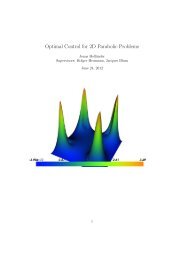
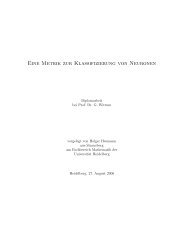
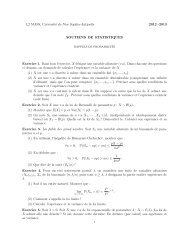
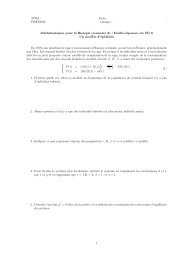


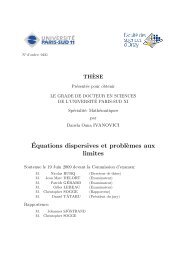
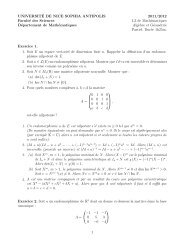
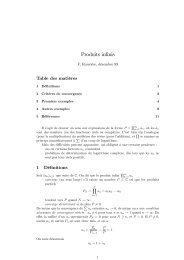
!['eries enti\`eres (+ [D78 Th d'Abel angulaire])](https://img.yumpu.com/14067031/1/184x260/eries-entieres-d78-th-dabel-angulaire.jpg?quality=85)

